How To Access Hidden Files In Windows 10
Windows 10 offers an option to show hidden files and folders that you lot don't encounter by default. Once you enable this pick, File Explorer starts displaying all your subconscious items.
You can view the hidden files and folders in both File Explorer likewise as command-line tools like PowerShell and Command Prompt.
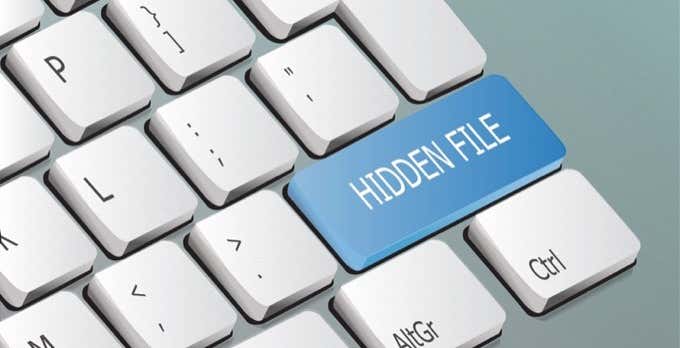
Evidence Subconscious Files and Folders in File Explorer
Follow the steps below to configure File Explorer to bear witness all subconscious contents in your directories.
- Open the Start card, search for This PC, and select This PC in the search results.
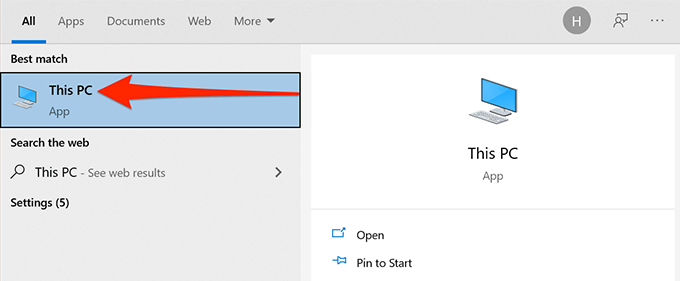
- Select the View tab at the superlative of the This PC window.
- On the correct of your screen, enable the Hidden items checkbox.
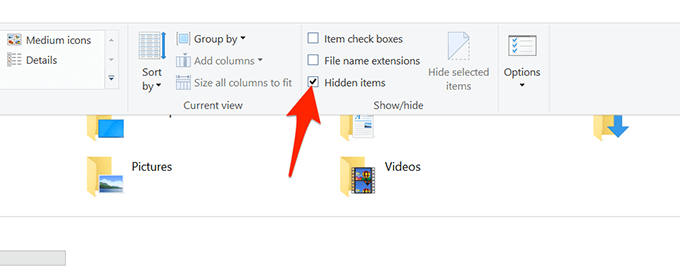
- File Explorer volition start displaying hidden files and folders on your computer.
- To re-hide your items, deselect the Hidden items box in File Explorer.
Show Hidden Files and Folders From Command Console
If you prefer the Control Panel, you tin can utilise an option in this utility to become Windows 10 to display subconscious files and folders.
- Access the Showtime bill of fare, search for Control Console, and select the utility in the results.
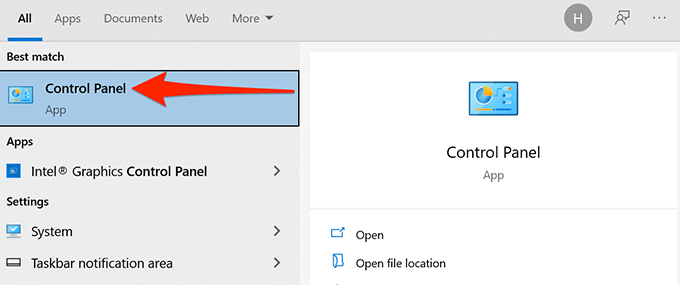
- In the Control Panel, select the card next to View by and choose Category.
- Select the Appearance and Personalization option.
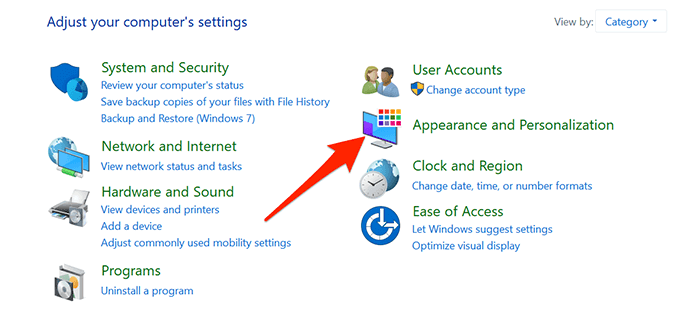
- Choose Show hidden files and folders nether the File Explorer Options.
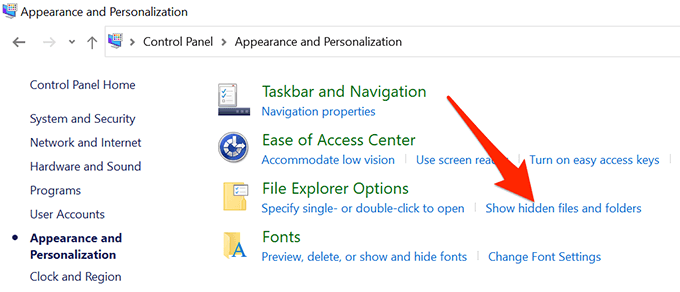
- Yous're now in the View tab of the File Explorer Options window. Here, select the Show subconscious files, folders, and drives option. Select Apply followed by OK.
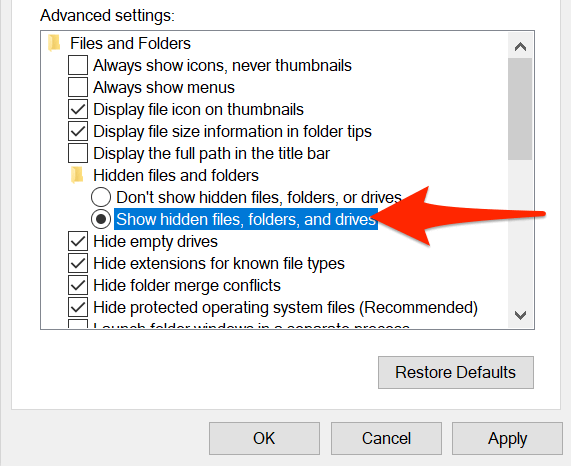
- Windows File Explorer volition now display all your hidden files and folders.
- To hide subconscious items, select the Don't show hidden files, folders, or drives option. Then, select Utilise followed by OK.
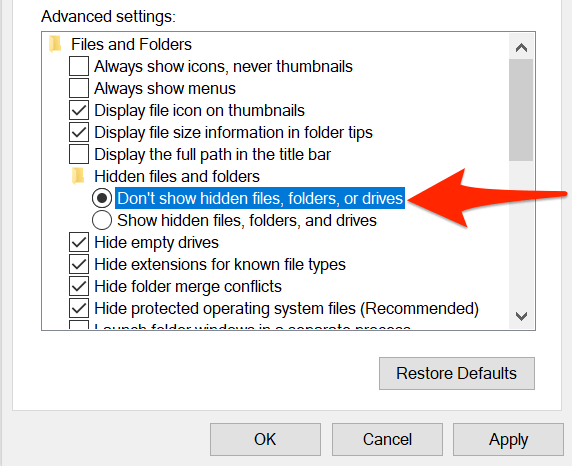
Show Subconscious Files and Folders From Settings
Windows 10'southward Settings app too includes the option to show subconscious contents on your PC.
To use this method:
- Press Windows + I keys to launch the Settings app or search and select Settings in the Start carte.
- Select the Domicile button if you're not on the main settings folio shown in Stride 3.
- Select Update & Security.
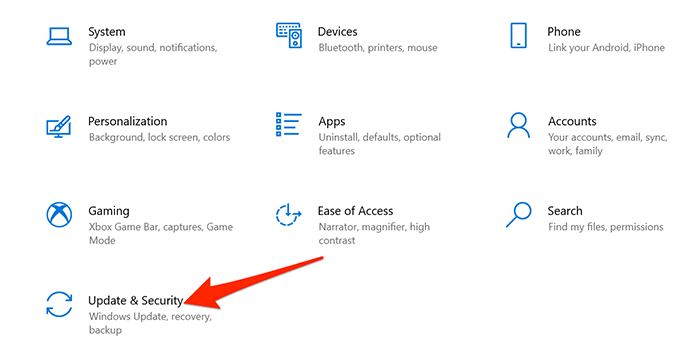
- Select For developers from the left sidebar.
- Scroll down the right pane to Change settings to evidence hidden and system files. Cull Show settings.
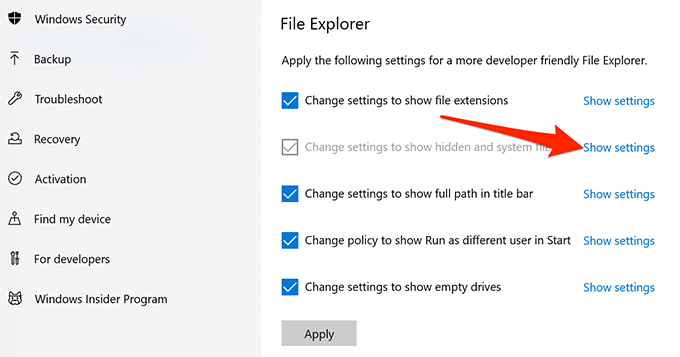
- Enable the Show hidden files, folders, and drives option. Then, select Apply and select OK to save your settings.
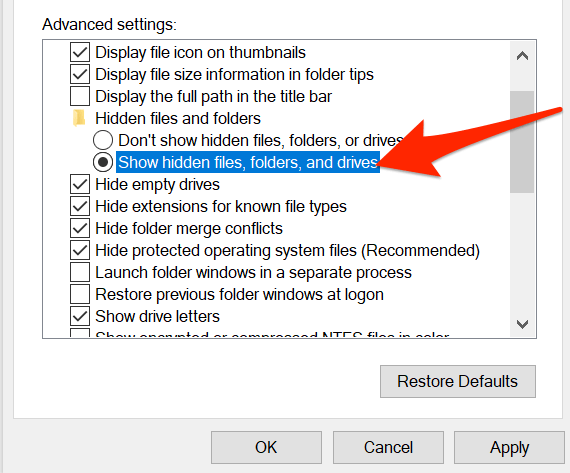
View Hidden Files and Folders in PowerShell
If you prefer command-line methods, you can employ a command in Windows PowerShell to retrieve a list of all your subconscious files and folders.
- Click on Start or the Windows Icon on the bottom left and type PowerShell. Select Windows PowerShell from the results.
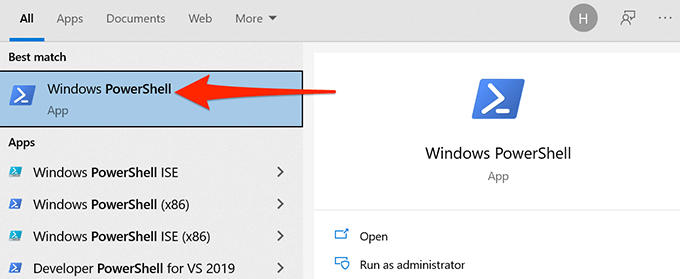
- In the PowerShell window, type cd, blazon a space, and then enter the full path of the folder where your hidden files are located. For example, if your hidden files are in a folder called MyDocuments on your desktop, yous'd employ the post-obit command replacing USER with your username. Then, press Enter.
cd C:\Users\USER\Desktop\MyDocuments
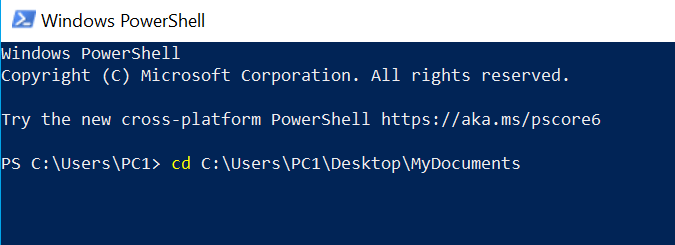
- Type dir -strength and press Enter. This reveals your hidden files and folders.
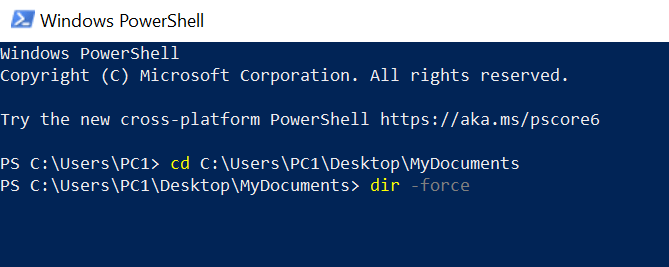
- If yous aren't sure what folder contains the hidden files, blazon cd, type a space, enter the full path of the folder whose subfolders could have the subconscious files, and press Enter. So, run this command:
dir -recurse -force
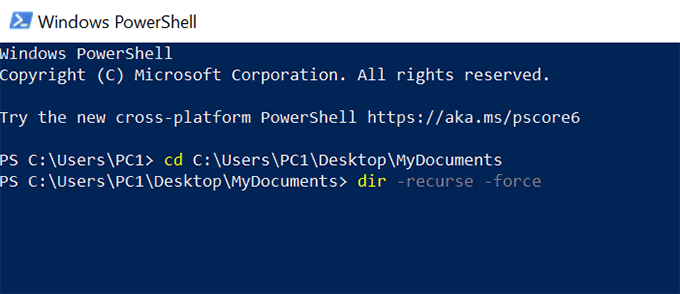
- Hidden items in the selected folder and sub-folders should appear in the PowerShell window.
Keep in listen that this method merely shows hidden files in a PowerShell window; it doesn't make hidden items visible in File Explorer.
View Hidden Files in Windows Command Prompt
Another fashion to view a listing of subconscious files and folders is to use Command Prompt. Follow the steps below:
- Press the Windows central to open the Start menu, search for Command Prompt, and select the utility in the search results.
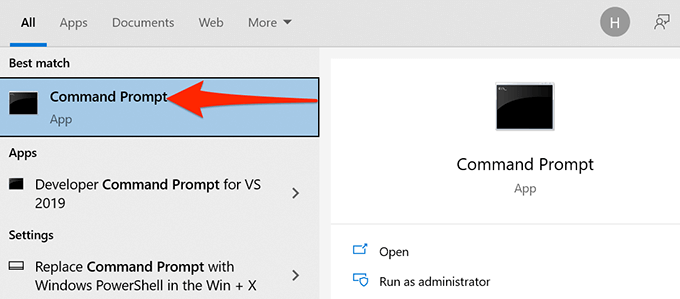
- Type cd, type a space, and then enter the full path of the folder where your hidden files are stored. Then, press Enter.
- Type dir /ah to view a list of the hidden files and folders.
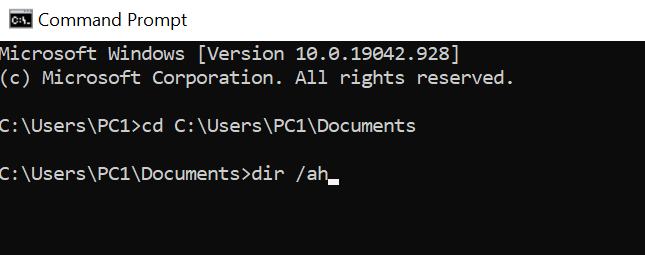
- If you lot don't know what binder contains the hidden files, you can run a subconscious file scan on a parent folder. This volition scan all of the subfolders in that master folder. To do this, type cd, type a infinite, enter the full path of the folder, and press Enter. Then, run the following command:
dir /ah /s
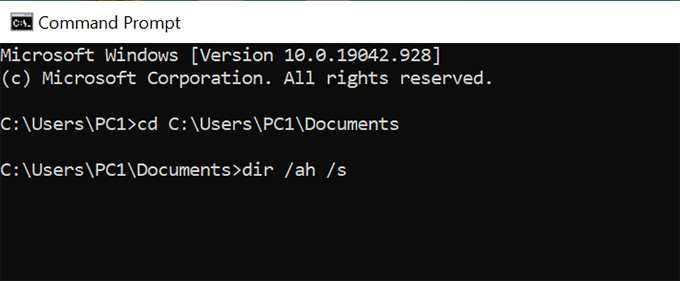
- The Command Prompt window at present lists the hidden items from the specified folder and sub-folders.
The above method doesn't make any changes to File Explorer options and but lists the hidden files.
Show Hidden Operating Arrangement Files
At that place are certain operating system files that won't announced even if you lot enable the hidden files option in File Explorer. Follow the steps below to toggle on a separate option to view these subconscious Os files:
- Press the Windows primal to open the Start carte du jour, type Show hidden files, and select that choice in the search results.
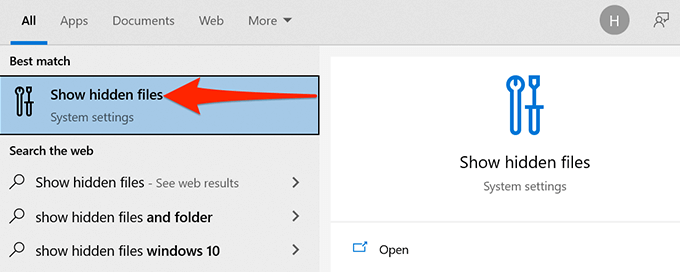
- Whorl to Change settings to bear witness hidden and organisation files and select Show settings.
- Scroll down to Hide protected operating system files (Recommended). Uncheck the box for this option.
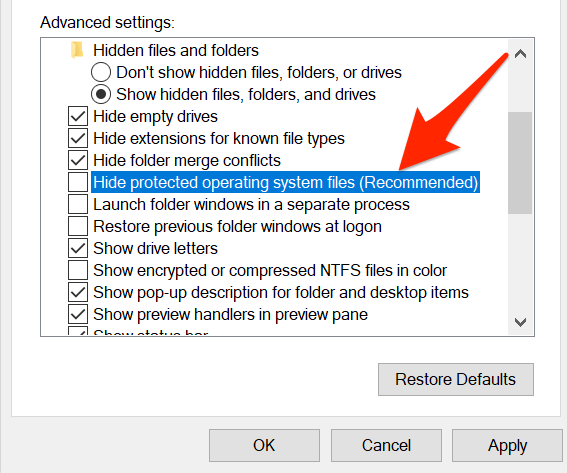
- Select Yep if a warning pops up. Then, select Apply followed past OK.
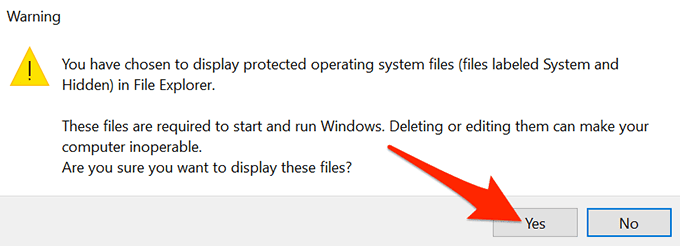
A Word of Caution
On the internet, many resources may enquire you lot to use the attrib command from the Command Prompt or PowerShell to view your subconscious items. Information technology's by and large non safe to change the attribute of a organization file as this may have unexpected consequences.
Practice allow us know, in the comments below, which method worked for you.
Practise not share my Personal Information.
Source: https://www.online-tech-tips.com/windows-10/6-ways-to-show-hidden-files-and-folders-in-windows-10/
Posted by: ballardcousise81.blogspot.com

0 Response to "How To Access Hidden Files In Windows 10"
Post a Comment